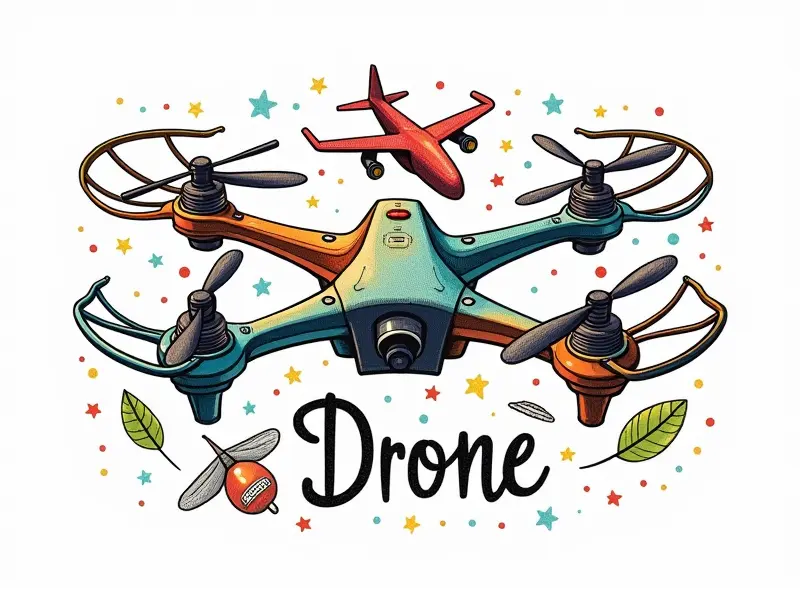What affects battery capacity?

What Affects Drone Battery Capacity?
Battery capacity is a critical factor in determining the performance and longevity of drones, remote-controlled (RC) aircraft, and quadcopters. Understanding how various elements influence battery life can help users optimize their equipment for better efficiency and longer flight times. This article delves into several key factors that impact drone battery capacity.
How Weather Affects Drone Battery Life
The weather plays a significant role in determining the duration of your drone's flight. Extreme temperatures, humidity levels, wind speeds, and precipitation can all affect battery performance. Cold weather tends to reduce battery efficiency due to higher internal resistance, while hot conditions may cause batteries to overheat and degrade faster.
Altitude Impact on RC Battery Capacity
Flying at high altitudes requires more power from the drone's motors to maintain lift against lower air density. As a result, the battery discharges more quickly compared to low-altitude flights. This is particularly noticeable in mountainous regions or when flying over large bodies of water.
Key Points
- Air Density: Lower at higher altitudes, requiring more power for lift.
- Battery Efficiency: Decreases with altitude due to increased resistance and energy consumption.
Flight Speed vs. Battery Duration Explained
The speed at which a drone travels directly correlates with its battery life. Faster speeds increase the load on motors, causing them to consume more power. Conversely, slower flight speeds allow for longer durations as less energy is expended maintaining velocity.
Key Points
- Motor Load: Higher at faster speeds due to increased resistance and aerodynamic drag.
- Battery Consumption: Directly proportional to flight speed, impacting overall duration.
Weight Effects on Quadcopter Battery Life
The weight of a drone significantly affects its battery capacity. Heavier drones require more power from their motors to achieve and maintain lift, leading to quicker depletion of the battery. Lighter designs are generally more energy-efficient and can fly longer.
Key Points
- Motor Power: Higher for heavier loads due to increased gravitational force.
- Battery Efficiency: Lower with added weight, reducing overall flight duration.
Propeller Size and Battery Efficiency Link
The size of a drone's propellers has a direct impact on battery efficiency. Larger propellers can generate more lift at lower RPMs compared to smaller ones, which require higher RPMs for the same effect. This means that larger props are generally more efficient in terms of power consumption.
Key Points
- Lift Generation: Larger propellers produce more lift per revolution.
- Battery Consumption: Smaller propellers consume more energy due to higher RPM requirements.
Signal Interference's Role in Battery Drain
Interference with the drone’s signal can cause it to work harder, leading to increased battery drain. This interference may come from other electronic devices or environmental factors such as buildings and trees. Ensuring clear communication between the controller and the drone is crucial for optimal performance.
Key Points
- Signal Quality: Poor signal can lead to increased motor activity due to lag.
- Battery Efficiency: Reduced when the drone has to compensate for lost signals.
Terrain Complexity and Power Consumption
The complexity of terrain over which a drone flies also influences battery capacity. Flying through dense vegetation or navigating complex landscapes requires more power from motors compared to flying over flat, open areas. This increased energy expenditure reduces overall flight duration.
Key Points
- Motor Load: Higher in complex terrains due to varied lift requirements.
- Battery Drain: Faster when navigating through dense or uneven landscapes.
Temperature Fluctuations and Drone Batteries
Drone batteries are highly sensitive to temperature changes. Extreme cold can reduce battery capacity, while excessive heat may cause premature degradation of the cells. Maintaining an optimal operating temperature is essential for preserving battery life and performance.
Key Points
- Cold Temperatures: Decrease battery efficiency due to higher internal resistance.
- Hot Conditions: Cause batteries to degrade faster, reducing overall lifespan.
Motor Type Influence on Battery Capacity
The type of motor used in a drone can greatly affect its battery capacity. Brushless motors are more efficient and produce less heat compared to brushed motors, leading to longer flight times. However, the specific design and quality of the motor also play crucial roles.
Key Points
- Battery Efficiency: Higher with brushless motors due to reduced friction and heat generation.
- Motor Quality: Influences overall performance, impacting battery life positively or negatively.
How Battery Age Reduces Performance
The age of a drone's battery directly affects its capacity. Over time, batteries degrade and lose their ability to hold charge efficiently. This degradation is accelerated by frequent use, extreme temperatures, and improper storage conditions. Regularly replacing older batteries ensures optimal performance.
Key Points
- Battery Degradation: Occurs naturally over time due to chemical changes within the cells.
- Frequent Use: Accelerates degradation, reducing overall flight duration and capacity.
Cell Count: The Key to Longer Flights
The number of battery cells in a drone's power pack is crucial for determining its flight time. Higher cell counts provide more voltage and capacity, enabling longer flights. However, adding too many cells can also increase weight, which may offset the benefits.
Key Points
- Battery Capacity: Directly proportional to the number of cells in series.
- Weight Considerations: More cells add weight, potentially reducing overall efficiency.
In conclusion, numerous factors influence drone battery capacity and performance. Understanding these elements can help users optimize their equipment for better efficiency and longer flight times. By considering weather conditions, altitude, speed, weight, propeller size, signal interference, terrain complexity, temperature fluctuations, motor type, battery age, and cell count, you can maximize the potential of your drone.

